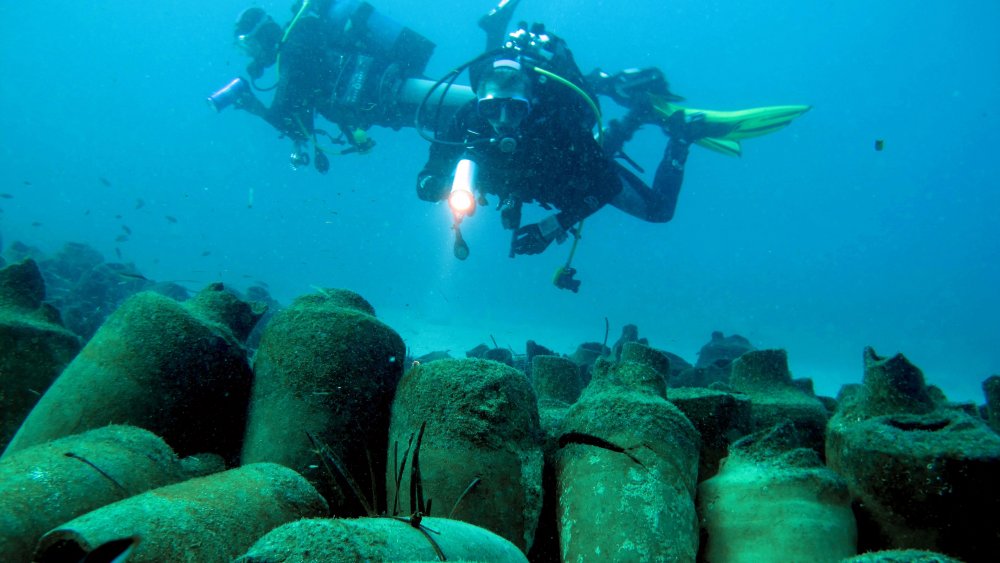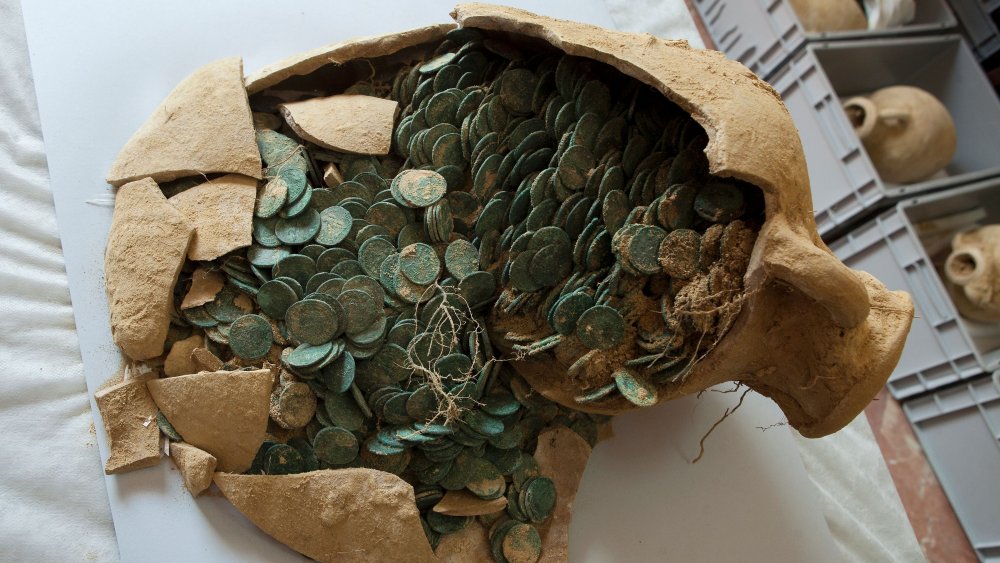The Truth About The Roman Shipwreck Discovered Off Mediterranean Coast
Chances are if you just searched "Mediterranean booty" or "Roman jugs," you weren't expecting to read about one of the largest Roman shipwrecks ever discovered. But much like the discovery itself, it's a story worth diving into and exploring.
According to MNN, the ancient 110-foot merchant vessel was found at a depth 197 feet off the coast of the Greek Island of Kefallinia, with the help of advanced sonar technology. The only visible parts remaining are "1,200 ceramic shipping jugs known as amphorae, resting in a haunting outline of the wreck."
That might not seem like a lot to go off of, but researchers are crafty, and able to extract a surprising amount of data from the skeletal remains of the ship.
First off, they've ruled out stormy weather as the cause of its demise. "'The outline of the amphorae on the seafloor resembles the outline of ships at that period,' Dr. George Ferentinos told MNN of the 'Fiscardo' wreck, named after a nearby fishing village. 'This indicates that the cargo has kept the outline of the ship, suggesting that the ship sank very slowly in an up-wright position and and came to rest on its keel and then gradually tipped in the one side with the hull keeping its overall structure. Therefore, it may-be assumed that the ship did not sink due to stormy weather but probably due to amphorae shifting in the hull.'
If your ship is going to sink, "gradually" and "upright" seems like a pretty good way to go. But there's more.
What's in the jug?
The amphorae were stored in five layers within the ship's hull, leading researchers to estimate as many as 6,000 ceramic jugs may have been aboard when the ship succumbed to the depths. It's also estimated that the Fiscardo and Roman ships like it were capable of transporting "up to 400 tons of cargo to ports throughout the Mediterranean and beyond."
And there's an even more interesting layer to this ship-cake: they might be able to tell what was inside of the amphorae, and how old the ship itself was. Based on the dimensions of the jugs, the Fiscardo has been dated to "sometime between the first century B.C. and the first century A.D."
As for what's inside, we'll have to wait and see, but Ferentinos reports some of the amphorae may still be sealed. "However, even if the amphorae are opened, by taking a sample from the inside wall of the amphorae you can find with what they were filled by determining the DNA of the absorbed material in the wall."
Place your bets, and hope we find out before another millennium passes by.

